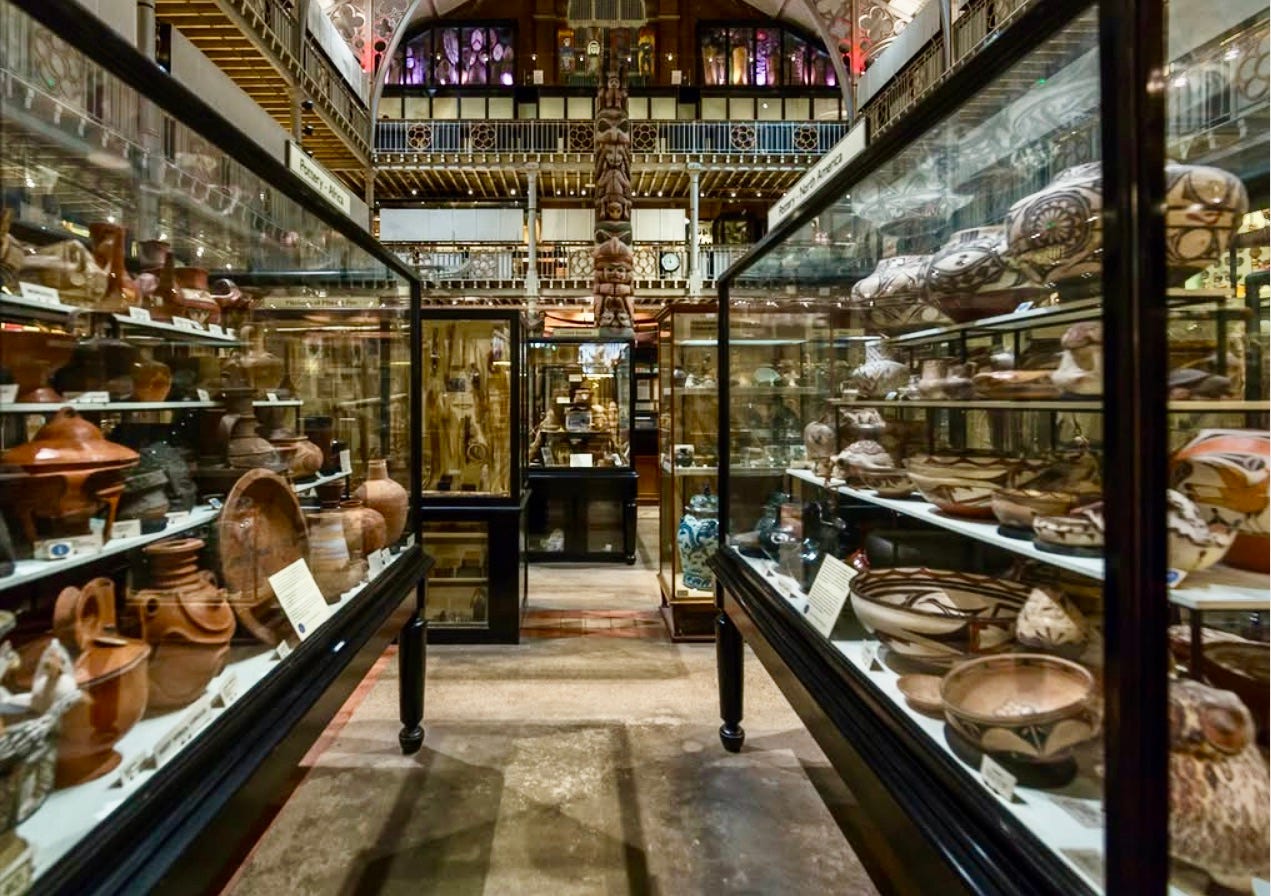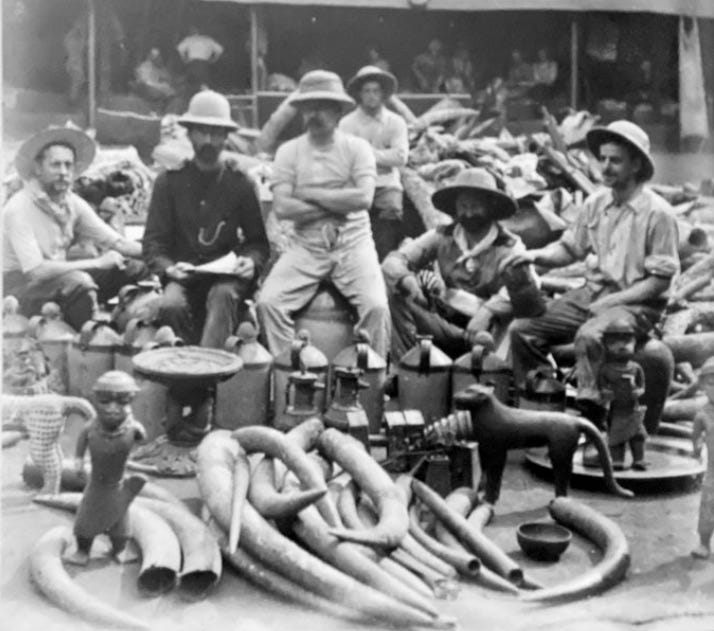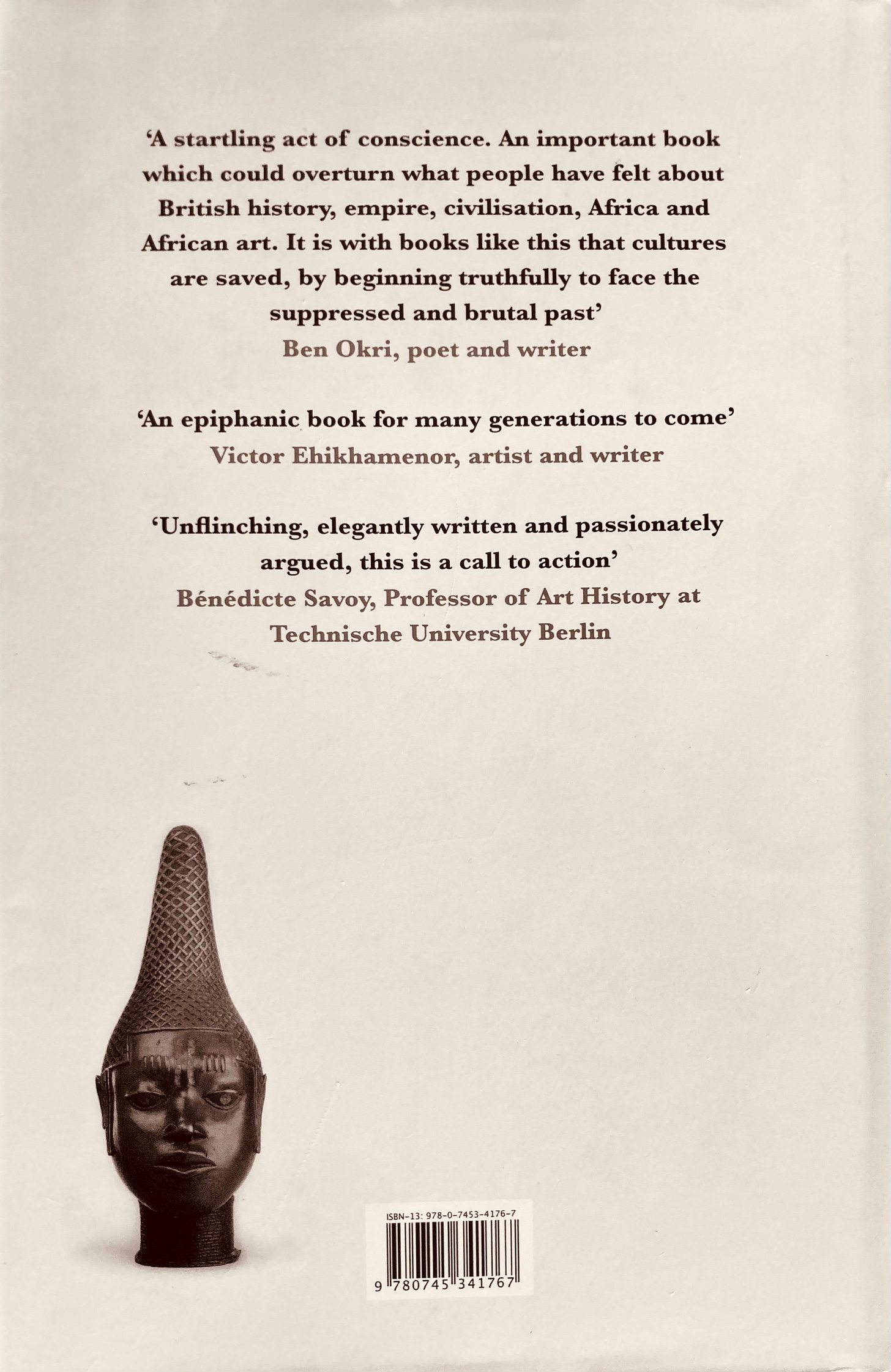RECENT READING 3: the past as present and future
Museum curator Dan Hicks writes about history, culture and why we need to change the way we think about the past. Part 3 of my trilogy about writing outside the box.
Part 3: On The Brutish Museum: the Benin Bronzes, Colonial Violence and Cultural Restitution, by Dan Hicks, Professor of Contemporary Archeology at the University of Oxford and Curator of the Pitt Rivers Museum
Three books with a lot in common, though ostensibly about completely different subjects, by authors of different generations who have never met.
But they’re bound in multiple and layered ways, all to do with thinking innovatively - transgressively even - about very human matters, like creativity, imagination, history, change and moral courage.
Jack Kerouac’s On the Road: the Original Scroll, the epochal novel finally issued unexpurgated as its author intended, is a series of jazz/word solos structured on the theme of journeys “to the end of the continent and the end of doubt”. Vivien Goldman’s Rebel Musix is about the same thing (broadly speaking) but from musicians’ perspectives rather than a writer’s (though Kerouac’s poetic prose is richly musical too). And Dan Hicks’ book is about repairing and renewal and restorative justice for what has historically not been paid for and probably never could be. All three books are about change. They all look forward to landing on a higher plane of thought and deed, and what makes each of them exciting, besides laudable ambition of course, is the honesty and commitment in the writing. Language as firestarter.
The Brutish Museums and Rebel Musix most obviously intersect because The Brutish Museums deals with what happened in 1897 when British troops murdered and ransacked their way to the razing of Benin city, ancient and artistic capital of the Yoruba kings of the Niger Delta; and even more importantly (if that’s possible) that cataclysmic event’s very much still active afterlife of oppression and othering through displays of looted artefacts - known as the Benin Bronzes (actually bronze, brass, iron and ivory) - in museums around the world. The gun that fires twice, as Hicks so pointedly says. And Rebel Musix contains lengthy interviews with legendary Nigerian Afrobeat musician and oppositional political-cultural activist Fela Anikulapo Kuti, and Jamaican “conscious reggae” musician Bob Marley, for both of whom the intergenerational legacy of the West African slave and commodity economy was real, and indeed continues worldwide.
Dan Hicks is Professor of Contemporary Archaeology at the University of Oxford and Curator of the Pitt Rivers Museum there, venerable home to 500,000 objects including a huge collection of colonial booty. No tame academic pussyfooting here though. Its website admits it’s “a contested space that calls for innovative curation to engage with the more difficult aspects of its history; a place where many histories collide”.
There aren’t overt music references in his book (unlike Kerouac’s and Goldman’s) but Hicks can certainly riff on an idea with fascinating intensity. Ideas roll off his pages, articulated beautifully to lead us to the inevitable conclusion: museums continue to legitimise ongoing national and local histories of conquest and exploitation when they display arts and artefacts nearly always directly or indirectly acquired through theft, deception or outright genocidal ultra-violence, as in the case of up to 10,000 Benin Bronzes now dispersed in hundreds of collections worldwide.
“Museums are devices for extending events across time”, he convincingly argues. Displaying the Benin Bronzes is in fact the re-enactment of their original theft, giving that heinous violence an ongoing duration.
In the heart of the book he pulls no punches in describing at length the sacking of Benin. A British so-called punitive expedition was launched after emissaries of the London-based Royal Niger Company were killed en route to remind the oba (king) of his obligation to honour the company’s trade monopoly in his kingdom. “Culture was not just throttled but decimated, wilfully…. Therein lies the truly unquantifiable horror that came to overwhelm the whole”.
Hicks singles out the destruction of Benin as a key episode in what he calls World War Zero, dating from the Berlin Conference to the outbreak of the First World War. In these 30 violent years “the British atrocities and body count” devastated societies perhaps irreparably, as also happened under notoriously cruel regimes in Belgian and German colonies. The British force’s indiscriminate killing of men, women and children, the destruction of infrastructure and the wholesale ransacking of culturally significant works of religion and art broke almost every rule of warfare that the Hague Convention of 1899 would soon outlaw.
Museums excel at what he calls necrographies, death histories, histories of loss… “But what soldiers and anthropologists and the brutish museums of Europe and North America saw as relics or curios are of course forms of cultural endurance unfolding over centuries”. Objects in museums’ vitrines have not reached their endpoint in the dark rooms of the museum, just as the adage that photographs freeze time is a nonsense.
Hundreds of thousands of artefacts, skulls, whole corpses, have been taken by colonial powers for study and display, most of which still languish in Solander boxes in museum vaults in the global north. For Hicks, museums’ attempts to re-brand as “World Museums”, neutral zones of safe keeping for cultural products from around the world, just won’t wash. As he puts it, the ethnological and anthropological museum has ceased to work, and we must now look at it in a different way. As when a car or other technology malfunctions, we can no longer take it for granted and are now forced to regard it in a new light.
He goes on: “The invention of ethnological displays was surely as significant technology in the history of Victorian colonialism as the Maxim machine gun, invented in 1884, the same year as the opening of the Pitt Rivers Museum and the Berlin Conference” - at which the great powers set rules for carving up the entire African continent between them, from Algeria to the Cape of Good Hope (bar Liberia and Ethiopia).
The Maxim fired 10 bullets per second, 600 a minute. The Benin force carried 14 Maxims with them across land with 24 more onboard ships, and two million cartridges. That’s a potential firepower of 380 bullets per second, Hicks points out. Against spears, arrows, machetes and flintlock muskets.
We can and must overcome the weight of our concocted histories and past museum practice, says Hicks. Museums exist in the present, not the past. They must be sites of knowledge (including self-knowledge, I would add) not of narrative. Sites of conscience, restitution, reparation and reconciliation.
Newcomers to some of the incredibly unsettling facts disclosed in The Brutish Museums could be forgiven for shouting “Why weren’t we told?”. That of course is the title of Australian historian Henry Reynolds’ exposé of frontier violence in British Australia, much of which was concurrent with British empire-making in Africa, continuing right up until around 1930 (the Killing Times as it’s known by Aboriginal communities in different parts of the country, the Top End in particular where the cattle industry occupied tens of millions of acres of Aboriginal land with violent impunity).

Where I’m writing from in Australia there are certainly lessons in Hicks’ book. Restitution of Aboriginal cultural objects, and especially human remains taken in the name of long discredited racial science (though it nonetheless formed the basis of government White Australia and Assimilation policies until the 1970s) has at last begun, a complex and subtle process with much urgent work still to do. As geologist Dr Jim Bowler has said, Australian Aboriginal communities “are still dealing with the effects of the fucking enlightenment”. It was Bowler who found the ceremonially buried remains of the oldest known Australian humans in 1968 (Mungo Lady) and 1974 (Mungo Man), at Lake Mungo in western New South Wales. They had lain undisturbed for a carbon dated 42,000 years, only to be unceremoniously (literally) dug up and whisked away by anthropologists from the Australian National University without reference to the area’s traditional owners, or indeed notions of propriety or larger spiritual or moral issues. (Chastened by his unwitting role in the Mungo removals, Bowler has since dedicated himself to helping return their remains to their Country).
How museums worldwide respond to The Brutish Museums is a work in progress. Resistance like the rearguard action of the British Museum to keep the so-called Elgin Marbles in London (official policy not mere inertia) contrasts with the Pitt Rivers Museum’s policy of restitution of its Benin Bronzes under Dan Hicks’ leadership.
It’s clear though that this is not a simple task of crating up and shipping back. Remnant sites of Benin’s cultural, religious and royal past are decaying with little to no care from the Nigerian state, resource rich but plagued by corruption and military dictatorships in the wake of hurried withdrawal by its colonial rulers. “It is understandable to want back what was stolen, but to do so while neglecting what you still have suggests a sentimental exercise in the service of wounded pride”, writes Lagos-based Anglo-Nigerian essayist Adewale Maja-Pearce. “Meaning may be even harder to repatriate than the objects themselves”.
But as Hicks calls it, every day that museum doors open to viewing of colonial booty is another day that its original theft is repeated. At last, surely, the lingering, poisonous fog of apologism typified by Oxford historian Hugh Trevor-Roper’s breathtaking dismissal of pre-colonial Africa - "the unedifying gyrations of barbarous tribes in picturesque but irrelevant corners of the globe" - has been consigned to the dustbin of history.
The sound of the gun that fires twice, once a gun that didn’t make any noise, is getting louder and louder.
If you enjoyed this article, here are the first two in the trilogy, Recent Reading and Recent Reading 2
And this earlier post:
SETTLER CAPITALISM
Settler Capitalism is a phrase bandied about as if it carries no baggage, a historical fact from the distant past, entirely neutral - like Queen Victoria’s underwear, say. Amoral and beyond the reach of judgements. It appears to imply nothing more than a past state of political economy. Yet it’s a phrase that, more than any other I can think of, contains within it the very essence of the Australia we live in today.
Because as much as there is a philosophical basis to contemporary Australia, then surely Settler Capitalism is it. Since 1770, when James Cook raised the Union flag on Possession Island, it has been Australia’s past, and its present and future.
But it sits like a weeping sore within our moral and spiritual conscience










